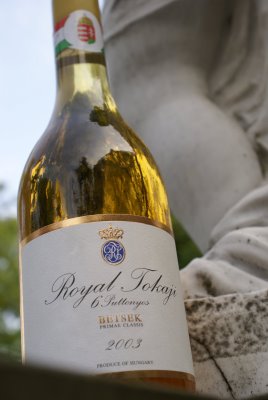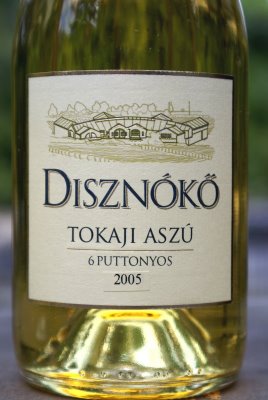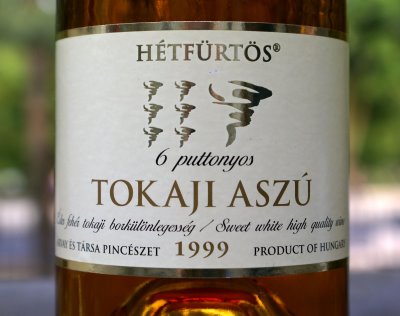The wine of kings – no doubts

Last Monday was the second edition of the Tokaj Day in Warsaw. Co-organised by the WINO Magazine (where I’m one of the editors) and the Tokaj Renaissance association, it’s a major consumer event aimed at presenting the new vintage of sweet aszú wines to the public. (It mirrors a similar event that takes place every May in Budapest).
For the Polish wine writer and wine lover, Hungary is a major wine-producing country, and Tokaj is the prime region of Hungary. For reasons of tradition, geographic vicinity, and let me say, spiritual affinity, the red wines of Eger and Villány, the white wines of the Balaton, and the sweet ones of Tokaj have always held a special place in our hearts and cellars. There might currently be more romance associated with Brunello or more bottom-shelf reliability with Colchagua but when an emotional bottle is to be opened, you’re almost guaranteed to see a bottle of Tokaji on a Polish table.
Tokaj Renaissance is a private association of wineries that has consistently represented the region’s best since 1995 (although there are some controversial moves in and out of the club, including the recent secession of Királyudvar and István Szepsy). 12 of Renaissance’s members made the trip to Warsaw this year, and there were a very amiable bunch of winemakers and sales reps, massively contributing to this event having an easy-going, almost family feel to it.

So what about the 2005 vintage? Based on this tasting (where each winery presented just one sweet aszú wine), it is not easy to assess. Tokaj producers are very positive about it, and I couldn’t help feeling they’re being a bit overenthusiastic when they compare it to the wondrous 1999 (perhaps the best vintage since the Wende of 1989). 2005, in fact, started rather grim with an uninspiringly cloudy summer, and was only saved by a prolonged Indian summer that allowed a good development of noble rot – a great Tokaji’s sine qua non.
The wines are of course showing very young, but with any degree of certainty they can be said to lack the steely acidic structure of 1999. 2005 is a rich vintage with a fair bit of botrytis in the aromatic spectrum – in fact if I had to compare it to other recent vintages it tastes like a slightly better, more consistent version of 2004 and 2001 (two rather light but fairly classic and attractive vintages). And it is also showing very heterogeneous. From the very light, almost semi-sweet Aszú 5 Puttonyos of Béres to the ultra-rich 6P of Bodvin, from the fairly traditional, spicy-oxidative style of Samuel Tinon to the diamond-clean one of Disznókő, the vintage is a faithful reflection of modern Tokaj’s diversity – but this doesn’t make the task of fully assessing a vintage any easier.

The above-mentioned Disznókő presented what was perhaps the most convincing 2005 6P, still a little shy but excitingly driven and spicy with a structure that guarantees imminent improvement. Royal Tokaji’s 6P Szt. Tamás is brooding, tense and devilishly long on the palate but showing masses of oak on the nose for now; this will be for the most patient among you. Dobogó made a complex, sweet-savoury 6P with lovely freshness but perhaps not among the very best Tokajis. To Samuel Tinon’s credit, his 5P 2005 showed the clearest minerality and structure but also a certain green, leafy character that somehow shows the limits of the vintage. All these wines must be retasted in six months or so to really make sure.

Not surprisingly, therefore, the most exciting bottles of this exciting day were not 2005 aszús. There were some outstanding older sweet wines, including the fantastically poised 2003 Betsek 6P from Royal Tokaji (probably the best acidity in a 2003 Tokaj I can remember), though even this was overshadowed by Royal’s mindblowing 2003 Mézesmály 6P which is a 99-point wine if there ever was one: decadently rich but with an incredible lemony drive. From Sauska Tokaj (formerly Árvay & Co.) came an utterly delicious 1999 6P, slowly maturing, deep, complex, heather honey-infused – and fairly approachable for a 1999, with a subdued acidity. These are all bottles to die for.

From lighter sweet wines, I really liked the Dobogó Mylitta 2007, a wine of impeccable balance where I’d challenge you to guess even half of the actual 127g of residual sugar; kudos to winemaker Attila Domokos. Another excellent bottle is the 2007 Furmint édes [sweet] from Pendits, mineral-fruity, balanced and joyful.
Samuel Tinon and his ground-breaking Dry Szamorodni.
Lots of interest in the dry wine department, too. A dozen aperitif bottles of Patrícius’ 2008 Dry Muscat were deliciously varietal while Royal’s 2007 Dry Furmint, simple but reliable and nicely rounded by a bit of oak, was head and shoulders above past vintages of this wine, and a really good surprise. On a more serious level, Dobogó showed a nicely mineral 2007 Furmint while the 2006 tasted at dinner was richer, rounder and more approachable today; this very reliable bottling is best enjoyed at 4 or 5 years of age, in my experience. And then there was the fascinating oddity of Tinon’s 2003 Dry Szamorodni. Made from botrytised grapes but fermented dry and then aged six years in unfilled barrels under a veil of yeast (like fino sherry or vin jaune from the Jura), this historical style has pretty much fallen into oblivion in Tokaj, where there are just a few commercial interpretations available from the large producers. Tinon’s tenacity, dedication and insight have shown what can be achieved. I followed this Szamorodni through a number of barrel samplings and was skeptical, but a few months after bottling this 2003 is really showing sheer class and unexpected elegance. With a spicy vin jaune nose of curry and nuts, it ravished with some lovely evolved fruit on the palate and a soft, unaggressive, perfectly ripe acidity. More on Tinon’s project when I visit him again in the autumn; meanwhile, watch this space in the coming weeks as I review more Tokaj wines for you.

